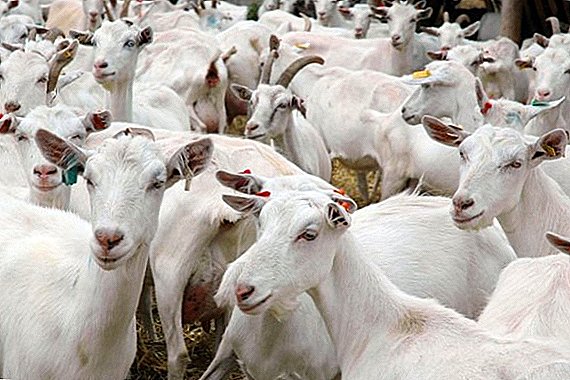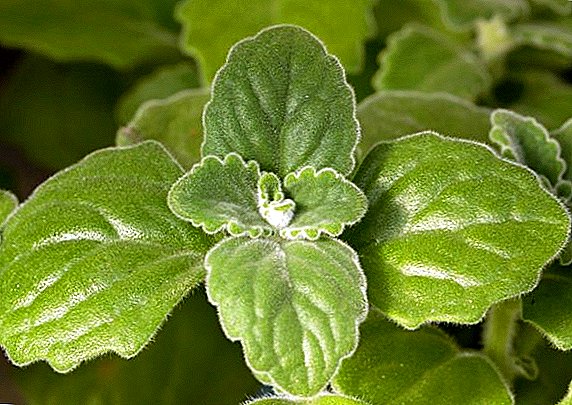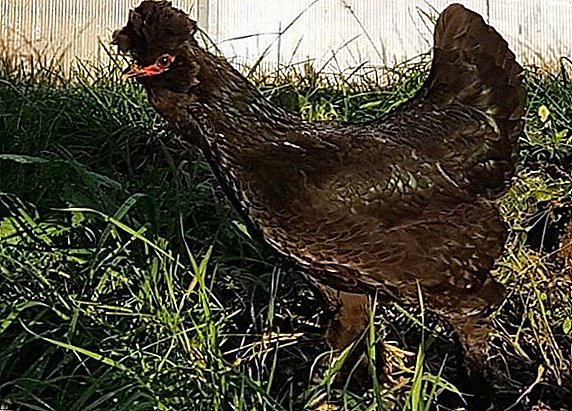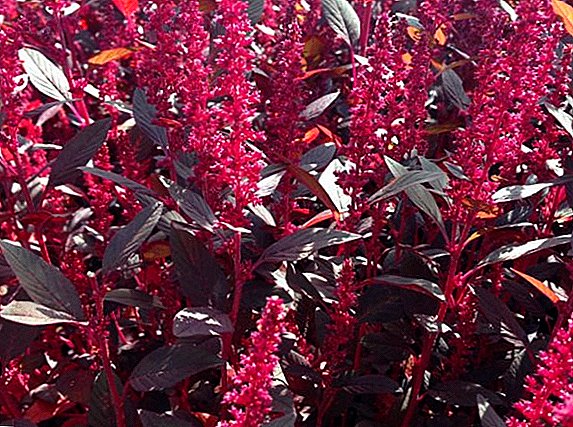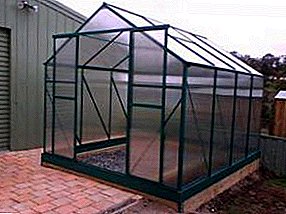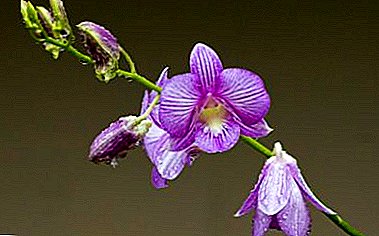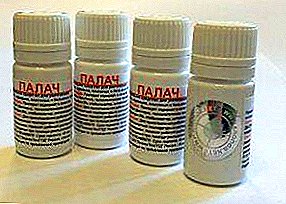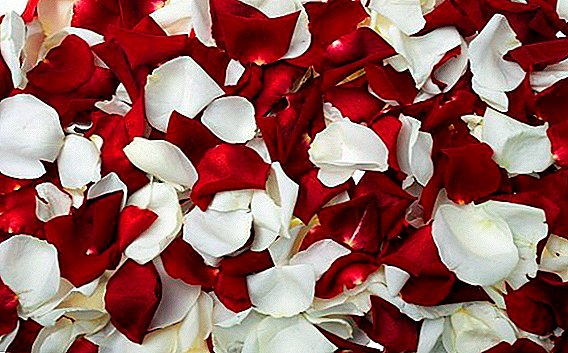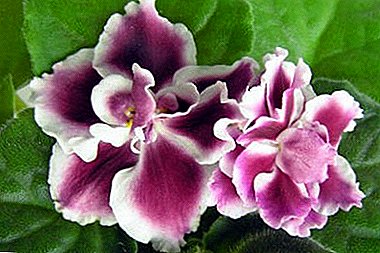
Choosing a violet as a gift for a woman cannot be mistaken. For its visual appeal, beauty and bright colors of petals, violet has earned the sympathy and even love of gardeners. Especially good violet varieties "Cherry".
In the article you can find a description of the appearance and photo varieties "Frosty Cherry" and "Winter Cherry", as well as the subtleties of care for them.
General description and photos of plants
Violets - perennials with petiolate leaves. Flowers in violets come in a variety of colors, single. The leaves of the plant have the form of a heart, the stem is creeping. The fruit is represented by a box with shutters.
Breeders do not cease to deduce more and more new species and varieties of violets, and therefore it becomes increasingly difficult to make a choice. Plain at first glance, the plants are able to turn during its flowering, even the smallest window sill in a stunning beauty flower bed. From the variety of varieties of their elegance stand out varieties of violets "Cherry", namely "Frosty Cherry" and "Winter Cherry".
A distinctive feature of violets varieties "Frosty Cherry" and "Winter Cherry" is that they have a magnificent dark cherry color with a white border at the edges of the petals. It is very reminiscent of a bright red cherry in the snow, powdered by frost, which gave the name to the varieties.





When and how did they appear?
The charming variety "Frosty Cherry" appeared thanks to the hard work of the Russian breeder Konstantin Moreva in 2005. 11 years of work crowned with the creation of an extraordinary plant with perfect flowers. Flowers of various rich cherry shades, with bright strokes or as if covered with hoarfrost, look equally magically. You can familiarize yourself with other varieties of violets bred by K. Morev here.
We told about the best varieties of violets of a famous flower grower and breeder E. Korshunova here.
Both varieties of "Cherries" are among the young, extremely popular due to their colorful, very effective combinations of cherry and white color in flowers.
Description of appearance: leaves, flowers and other
"Frosty Cherry" is a violet with large double flowers about 4 cm. The color scale is presented both crimson, and pale-pink shades. The petal presents a color transition from rich cherry-red in the center to a pale white stripe along the edge.
An impressive grower characteristic is the ability of the flower to change color with the change in temperature in the environment. The flowers become dark cherry at high temperatures and, as the temperature decreases, clarification occurs. And also, depending on the time of flowering, the stability of light, the saturation also changes.
 The rosette of the plant has a standard look and size, represented by simple leaves of a pointed form. Long, up to 10 months, and abundant flowering pushes the plant among the favorites of gardeners. The number of peduncles can be increased with the help of special fertilizers. Biological rest is extremely useful. The appearance of darkening petals, as a rule, indicates the aging of the plant.
The rosette of the plant has a standard look and size, represented by simple leaves of a pointed form. Long, up to 10 months, and abundant flowering pushes the plant among the favorites of gardeners. The number of peduncles can be increased with the help of special fertilizers. Biological rest is extremely useful. The appearance of darkening petals, as a rule, indicates the aging of the plant.
Violet "Winter Cherry" has huge, semi-double to the touch flowers, with wavy edges. The petals in the center are densely cherry, almost black in color, with a faint frosty edge. This variety is also characterized by a color change with temperature.
Care of these varieties
The optimum temperature for life is 10-15 degrees Celsius. When the temperature is below 5 degrees of frost or above 30 degrees of heat, the plant dies. Violet will please its owner with beautiful flowers in the temperature range from 20 to 25 degrees Celsius.
Optimum humidity is 60-80%. Excessive humidity in the air is harmful. Therefore, these varieties do not show spraying. Leaves are cleaned of dust using a shower.
Illumination of the plant. It is necessary to provide light day from 12 hours a day. In winter and autumn, plants need additional lighting. Stretching upwards, towards the light, petioles and leaves, indicate insufficient lighting.
When changing lighting, watching, you can find a position in the house where violets will have the most beautiful color.
When exposed to direct sunlight, burns on the leaves may occur.
Violets should be watered in a timely manner, since drying up the ground inside the pot has a detrimental effect on the plant, as well as an oversupply of watering. It is advisable to use warm water, little by little, but regularly, pouring it along the edge of the pot. Excess water, which after watering will flow into the pan, must be removed. Do not leave stagnant liquid.
 For "Frosty Cherry" and "Winter Cherry" a dense and overly nutrient rich soil is not suitable. It inhibits the plant, leading to a loss of appearance and a decrease in the number of peduncles, and also increases the risk of morbidity. Adult violets are fed twice a month with special means and fertilized 2 weeks after transplantation.
For "Frosty Cherry" and "Winter Cherry" a dense and overly nutrient rich soil is not suitable. It inhibits the plant, leading to a loss of appearance and a decrease in the number of peduncles, and also increases the risk of morbidity. Adult violets are fed twice a month with special means and fertilized 2 weeks after transplantation.
It is recommended to replant 2 times a year, with an increase in the diameter of the pot, without changing the height. A healthy plant is transplanted to the ground, but if there are signs of illness, the bush is removed, carefully shaken off all the soil and replace it with a new one.
Violets do not want to stay in a draft or open windows. The movement of air has a negative effect on the appearance of the flower.
In winter, if possible, it is desirable to lower the temperature to 15 degrees, less watering. Flowering after dormancy is usually more abundant.
Characteristic differences when growing
Landing
For planting an adult plant, it is advisable to use a pot that is not too deep, without drainage. The soil should be light and loose, and therefore in the composition of the soil: 3 parts - peat, 1 part - baking powder and 1 part - Vermion soil.
When planting violets with seeds, there is no guarantee that the flower will inherit all the mother signs.
Mixes and pots
You can take a special mixture for violets or a mixture of coniferous, turfy and leafy ground, add a little peat, baking powder.
The described varieties of violets do not like deep large pots, as their roots are located in the upper soil layer. For convenience, it is better to use low utensils.
Diseases
 Unfortunately, the plants can hurt. The use of new pots and new soil during planting is a measure to prevent the emergence and development of diseases.
Unfortunately, the plants can hurt. The use of new pots and new soil during planting is a measure to prevent the emergence and development of diseases.
Diseases of plants and their probable causes:
- The presence of holes and yellow spots on the leaves - excessively bright light.
- Blanching of leaves, curved edges - cold.
- Rotting roots - an excess of watering with cold water.
- Falling inflorescences - too much fertilizer.
Conclusion
Unusual bright species of violets varieties "Cherry" leave an indelible impression of flowering. They are unpretentious, care of them does not cause special difficulties. Achieve bright flowering, which will delight almost the entire year, under the force and beginner home grower.


